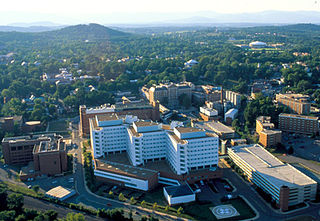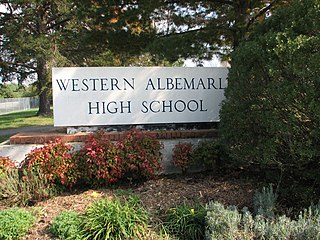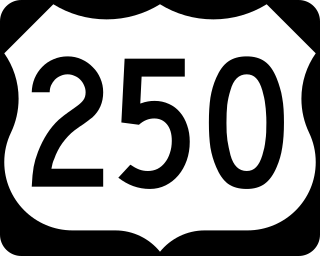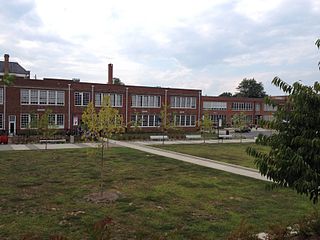Related Research Articles

Fluvanna County is a county located in the Piedmont region of the Commonwealth of Virginia. As of the 2020 census, the population was 27,249. Its county seat is Palmyra, while the most populous community is the census designated place of Lake Monticello.

Charlottesville, colloquially known as C'ville, is an independent city in the Commonwealth of Virginia, United States. It is the county seat of Albemarle County, which surrounds the city, though the two are separate legal entities. It is named after Queen Charlotte. At the 2020 census, the population was 46,553. The Bureau of Economic Analysis combines the City of Charlottesville with Albemarle County for statistical purposes, bringing its population to approximately 150,000. Charlottesville is the heart of the Charlottesville metropolitan area, which includes Albemarle, Buckingham, Fluvanna, Greene, and Nelson counties.

Albemarle County is a county located in the Piedmont region of the Commonwealth of Virginia. Its county seat is Charlottesville, which is an independent city and enclave entirely surrounded by the county. Albemarle County is part of the Charlottesville Metropolitan Statistical Area. As of the 2020 census, the population was 112,395.

Crozet is a census-designated place (CDP) in Albemarle County in the Commonwealth of Virginia, United States. It sits along the I-64 corridor, about 12 miles (19 km) west of Charlottesville and 21 miles (34 km) east of Staunton. Originally called "Wayland's Crossing," it was renamed in 1870 in honor of Colonel Claudius Crozet, the French-born civil engineer who directed the construction of the Blue Ridge Tunnel. The cornerstone of Crozet is believed to have been Pleasant Green, a property also known as the Ficklin-Wayland Farm, located yards from the actual Wayland Crossing. Claudius Crozet is said to have lodged in that property while surveying the land that today honors his name. The population of Crozet was 5,565 at the 2010 census. Crozet is part of the Charlottesville Metropolitan Statistical Area.

Western Albemarle High School is a public high school located in Crozet, Virginia. Western Albemarle is often simply referred to as Western or WAHS by students and locals. The school opened in September 1977. Due to the COVID-19 pandemic, the school went fully virtual following March 13, and it resulted in the use of Zoom platforms and online learning.

The Rivanna River is a 42.1-mile-long (67.8 km) tributary of the James River in central Virginia in the United States. The Rivanna's tributaries originate in the Blue Ridge Mountains; via the James River, it is part of the watershed of Chesapeake Bay.
Monticello High School (MHS) is a suburban public high school located in Albemarle County, Virginia, United States outside Charlottesville. Opened in 1998, it is one of three traditional comprehensive high schools in the Albemarle County Public Schools System. The school is named after Monticello, the nearby estate of President Thomas Jefferson.
Albemarle High School is a public high school serving grades 9 through 12. It is a part of Albemarle County Public Schools and is located just outside Charlottesville, Virginia, United States. The principal is Darah Bonham, appointed in 2019.

U.S. Route 250 is a part of the U.S. Highway System that runs from Sandusky, Ohio to Richmond, Virginia. In Virginia, the highway runs 166.74 miles (268.34 km) from the West Virginia state line near Hightown east to its eastern terminus at US 360 in Richmond. US 250 is the main east–west highway of Highland County, which is known as Virginia's Little Switzerland; the highway follows the path of the 19th century Staunton and Parkersburg Turnpike. From Staunton east to Richmond, the highway serves as the local complement to Interstate 64 (I-64), roughly following the 18th century Three Notch'd Road through Waynesboro and Charlottesville on its way through the Shenandoah Valley, its crossing of the Blue Ridge Mountains at Rockfish Gap, and the Piedmont. In the Richmond metropolitan area, US 250 is known as Broad Street, a major thoroughfare through the city's West End and downtown areas.
Monticello is an American Viticultural Area (AVA) located in the central Piedmont region of the Commonwealth of Virginia. It was established by the Bureau of Alcohol, Tobacco and Firearms (ATF) on February 22, 1984 after six wine grape growers in the Charlottesville area petitioned the ATF to designate a viticultural area to be known as “Monticello.” The name "Monticello" is known nationally and locally as the historic home of Thomas Jefferson, located near the center of the area. Monticello AVA includes most of Albemarle, Fluvanna, Greene, Orange, and Nelson counties. The area is nestled along the eastern slopes of the Blue Ridge Mountains and encompasses the small ridge known as the Southwest Mountains. There are approximately 30 varieties of grapes grown in the Monticello AVA. However, the most notable grapes grown in the area include Cabernet Franc, Chardonnay and Viognier. The hardiness zone is 7a except in some higher vineyards which are 6b. In 2019, the Tax and Trade Bureau (TTB) granted a petition to expand the AVA by approximately 106,240 acres (166 sq mi) into Fluvanna County.

William Robertson McKenney was a lawyer and U.S. Representative from Virginia.

Lane High School, in Charlottesville, Virginia, was a public secondary school serving residents of Charlottesville and Albemarle County from 1940 until 1974. It was an all-white school until its court-ordered integration in 1959. Black students formerly attended Burley High School. When Lane became too small to accommodate the student body, it was replaced by Charlottesville High School. In 1981, the building was converted for use as the Albemarle County Office Building, for which it has remained in use until the present day.
Tonsler Park is a park in Charlottesville, Virginia. It was the location of Balloon 3 in the 2009 DARPA Network Challenge.

Albemarle County Public Schools (ACPS) is a school district serving Albemarle County, Virginia. Its headquarters are in the City of Charlottesville. ACPS serves approximately 14,000 students in preschool through grade 12 in Albemarle County, Virginia, the sixth largest county by area in the Commonwealth of Virginia. A diverse locality of 726 square miles in the heart of Central Virginia, Albemarle County is a blend of primarily rural, but also suburban and urban settings.

Louise A. Reeves Archer was an American teacher and activist who fought to educate African Americans during the 1930s and 1940s. During this time, racial barriers limited a black student's access to education. They had limited resources compared to white children and were deprived education beyond seventh grade — when twelve grades was already common practice.
Jackson P. Burley High School was a segregated school for African American students in Charlottesville, Virginia. Located on Rose Hill Drive, it opened in 1951 to serve students from both the City of Charlottesville and Albemarle County. It graduated its final class of seniors in 1967, and soon after, the City's interest in the school was purchased by Albemarle County. In 1974 it reopened as Jackson P. Burley Middle School.

The Jefferson School is a historic building in Charlottesville, Virginia. It was built to serve as a segregated high school for African-American students. The school, located on Commerce Street in the downtown Starr Hill neighborhood, was built in four sections starting in 1926, with additions made in 1938–39, 1958, and 1959. It is a large two-story brick building, and the 1938–1939, two-story, rear addition, was partially funded by the Public Works Administration (PWA).
Esmont High School was a segregated school for African American students in Albemarle County, Virginia from 1904 to 1951. This and the Albemarle Training School were the two high schools for Black students in the County.This school served a small rural population, graduating fourteen students in 1942 and nine students in 1943. In 1944 the school expanded from two to three teachers and developed a departmental structure for the first time. In 1951, its student population moved to Burley High School. Nine years after the school closed, in 1960, Yancey Elementary School opened on the same site.

Rodney Alexander Robinson is an American educator. After teaching for over a decade in middle and high schools in Richmond, Virginia, he became a social studies and history teacher for grades 6 through 12 at the Virgie Binford Education Center, located inside the Richmond Juvenile Detention Center. He was named Virginia Teacher of the Year in 2018 and National Teacher of the Year in 2019.
Nannie Cox Jackson was a prominent African-American educator, wealthy property owner and businesswoman in Charlottesville, Virginia.
References
- 1 2 National Register of Historic Places: Determination of Eligibility Notification for Sammons House and Sammons/Ferguson Cemetery (PDF). 2013.
- 1 2 "[Untitled News Item--Charlottesville, Va. Nov. 19]". Richmond Times-Dispatch. 20 November 1931. p. 14. Retrieved 1 September 2018.
- 1 2 "Broom Factory Added to School". Richmond Times-Dispatch. 8 December 1918. Retrieved 1 September 2018.
- ↑ "Defense Training Approved". Richmond Times-Dispatch. 22 January 1941. Retrieved 1 September 2018.
- ↑ "Six Teachers are Elected in Albemarle". Richmond Times-Dispatch. 15 August 1941. Retrieved 1 September 2018.
- ↑ "Sammons Family Cemetery - Charlottesville". www.centralvirginiahistory.org. Retrieved 2018-09-01.
- ↑ "Education: The Power of the Mind | Thomas Jefferson's Monticello". www.monticello.org. Retrieved 2018-09-01.
- ↑ "Albemarle Training School | African American Historic Sites Database". African American Historic Sites Database. Retrieved 2018-09-01.
- ↑ "Sammons Family Cemetery - Charlottesville". www.centralvirginiahistory.org. Retrieved 2018-09-01.
Coordinates: 38°05′04″N78°29′18″W / 38.084442°N 78.488216°W